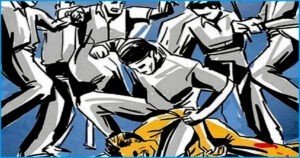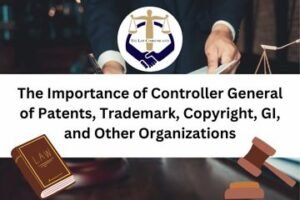Creative commons: impact on Indian Copyright Law
Written By: Dhimaan Dutta
Introduction
In an era when the internet has penetrated the vast majority of the globe, billions of individuals around the world may access massive volumes of content with only a few clicks. As a result, viewers’ cumulative desire for this content has increased dramatically, and mainstream creators are no longer able to satisfy it all on their own. Users may now produce and re-create content on a vast scale thanks to the combination of this appetite and access to basic editing software on a computer device like a smartphone. This phenomenon is known as “remix culture,” and it focuses on the tremendous pooled creativity that exists among the multitudes of amateur artists who are motivated by pure invention rather than profit motives. The constraints imposed on the usage of available content by copyright laws, however, are the most significant obstacles that these amateur users-cum-creators encounter.
Despite the fact that not all producers of original content want to totally restrict the use of their works through copyright, the law states that the artist retains “all rights reserved.” This assures that the instant something new is formed, it has a high risk of suffocating the exact creativity that it was intended to safeguard and perpetuate. The fundamental chilling impact stems from the fact that authorization from the creator is required for any use of protected information.
As a remedy, Creative Commons offers a license that is based on the notion of “some rights reserved” rather than “all rights reserved.” The licenses allow the creator to choose from four conditions (attribution, share-alike, non-commercial, no derivatives) to provide free and unlimited use of the work to all users on the one hand, or just the right to freely share the work without any changes while giving proper credit to the author on the other.
In India, where monopolization is generally frowned upon, particularly when it comes to creative components, Creative Commons appears to be an appropriate alternative to pursue. IIT Bombay created the Indian Chapter of Creative Commons in 2007 as part of its technology festival, Techfest. However, due to a number of issues, it did not come to fruition.
The Centre for Internet and Society, in conjunction with Wikimedia India and Acharya Narendra Dev College, is relaunching Creative Commons India on November 12, 2013, in New Delhi. Another example is Gaon Chhodab Nahin!, a song video highlighting Adivasi suffering as a result of development projects. It is licensed under the CC BY-SA 2.5 India license, which permits not only the commercial and noncommercial copying, distribution, display, and performance of the work, but also the creation of derivative works. Another initiative worth mentioning, though not in the realm of filmmaking, is that of Pratham Books, a non-profit publishing house that promotes unrestricted access to content in children’s books by advocating and employing Creative Commons licenses similar to those used in the aforementioned music video.
The Copyright Act, 1957, which is condensed in a handbook, legally brought copyright to India through the British empire. Simply said, every creative product – such as literary, dramatic, musical, and artistic works – that involves a significant creative process is copyrighted by the original author by default. When a person develops anything as part of their employment or contract, the work is owned by the employer. When the author (a wide word for the work’s creator) officially transfers the rights, the copyright is transferred. So, whether someone writes poetry, a tale, or a blog, or takes a photograph, or paints a painting, they own the copyright to the work as long as it is not just an adaptation or translation, they own the copyright to the work.
When a work is published, it is usually copyrighted by default and cannot be shared. A blog entry, a social network post, or a photograph uploaded online can all be deemed copyrighted content, and using it requires the consent of the copyright owners. The good news is that certain copyrighted information can be used for personal, scholarly, and non-commercial purposes, which can be combined under fair dealing. These, however, are insufficient. It is unlawful to take a picture from a Google search and use it on a commercial website. The majority of public-funded works published on public portals such as government websites are copyrighted. When looking at Wikipedia pages about various aspects of Indian culture, it is clear that there are much too few photographs in articles about India, as Wikipedia does not allow the use of copyrighted material. Copyright is a fundamental impediment to information exchange.
Creative Commons: A copyright-free alternative
In 2001, many others who were dealing with similar difficulties began to consider what could be a better option, and Creative Commons was formed. There is a collection of licenses known as CC licenses that allow individuals to reuse, remix, and modify original works while typically crediting the original creator. The CC-BY-ND-NC license is as protective as copyright except for a little amount of openness, but the CC0 license is near to the public domain and highly open, and offers a variety of protections to writers based on their needs. Not every photograph taken by a photographer may be sold, and not every author’s work requires the most stringent copyright restrictions (i.e. all rights reserved).
A differentiated view between copyright and CC
Creative Commons is a license that is applied to a work that is copyright protected. It’s not a distinct thing from copyright; rather, it’s a means to share copyrighted content more readily. Because copyright is so powerful, it automatically protects a large portion of what is generated. Copyright provides several strong safeguards to ensure that people do not use your work without your consent. Not everyone requires or desires all of those safeguards. However, if they took the time to license the work each time someone expressed interest in utilizing it, they would spend a lot of time and money allowing others to use it. Creative Commons is a non-profit organization that provides licensing frameworks for anyone to utilize in order to license their copyrighted work to anybody who agrees to the conditions of the license.
It allows you to share your work without giving up complete control or spending hours obtaining permissions. The copyright law generally gives the author of a work complete control over how it is used and distributed. This right can also be sold or licensed. The copyright holder chooses whether or not the work may be duplicated, who can copy it, and how. If someone wishes to utilize a creative work, they must first obtain the creator’s permission. The individual who uses the work without authorization is breaching the law. Creative commons, on the other hand, is a license that may be applied to a copyrighted work. Instead of repeatedly providing permission, the creator may utilize creative commons to make it easy for people to understand how they can and cannot use his work.
Attribution, non-commercial, no derivatives, and share-alike are the four primary limitations. These characteristics inform others about how the work is intended to be shared. If someone violates these limits, they are committing copyright infringement, and the repercussions are the same under creative commons as they are under copyright. So, to conclude in a single statement it would be copyright states, “Ask my permission before using my work,” whereas creative commons states, “You may use my work.” Here’s how to do it.
Conclusion
The adoption of Creative Commons by large user-generated content management platforms is already underway. These websites, which are accessible under the Indian copyright legislation, are certain to generate legal ambiguity. Furthermore, artists and authors of literary works have begun to use creative commons and similar licenses on their works throughout the world. It is expected that a disagreement may occur soon, potentially leading to precedents or policy choices that are detrimental to the growth of Creative Commons and similar licenses. The dissertation examines data from industry and jurists in an attempt to interpret their understanding of the concept of such licenses and then suggests an ideal perspective that could shape jurisprudence by combining the creative commons and similar licenses with existing copyright laws in India and abroad. Various suggestions and recommendations have also been made in light of the variables that are necessary for open source license expansion in India.
Previous Posts
Social security of the interstate migrant building and alternative construction employees in Kerala
Right to form association or unions: Constitutional, legislative and judicial perspective
Right to get water: the recent development and constitutional framework




